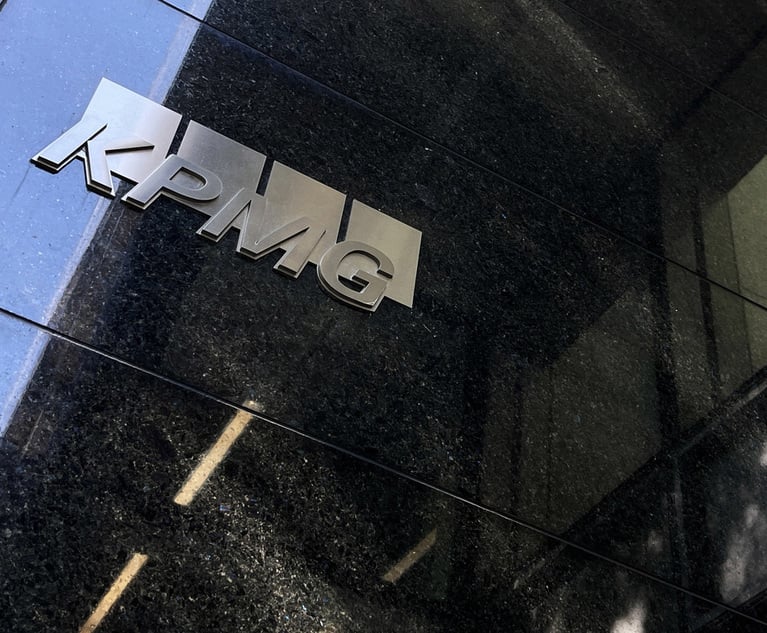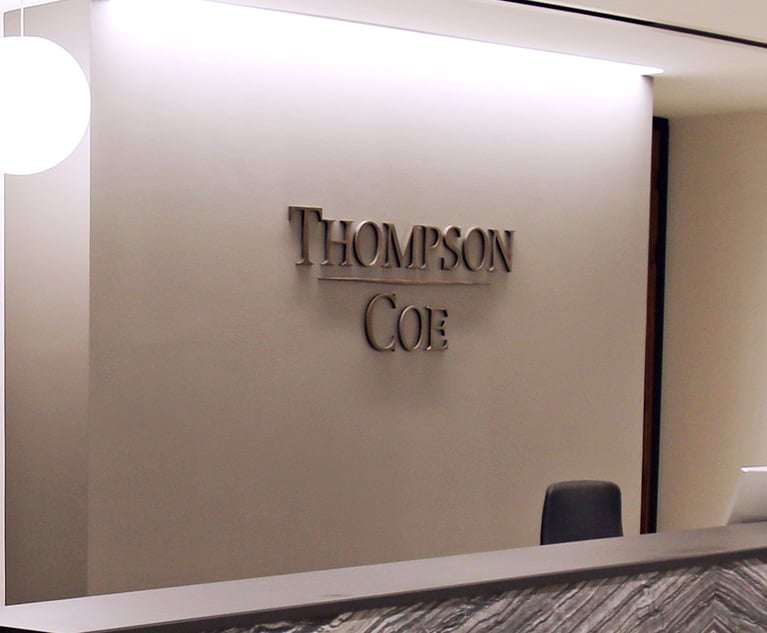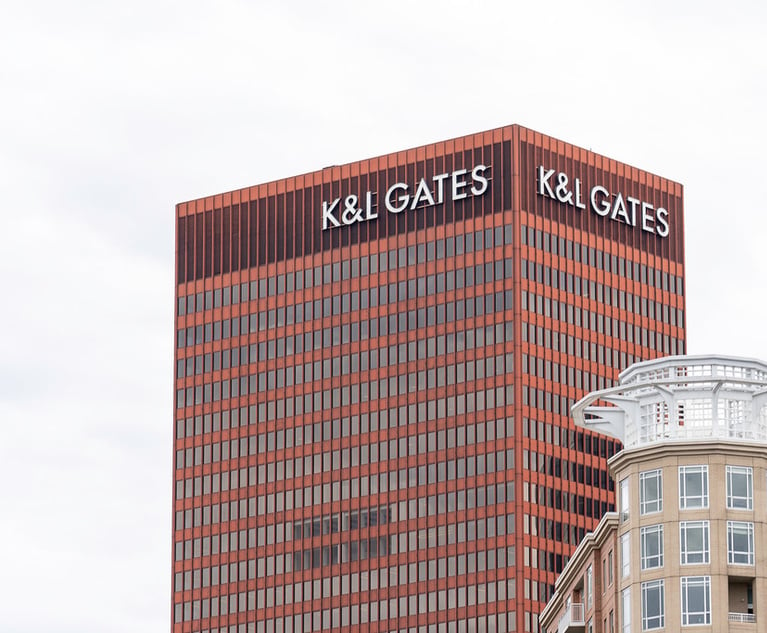Big Law Firms Got Millions of Dollars to Preserve Payroll. Some Made Cuts Anyway
At least nine Am Law 200 firms that received PPP loans cut jobs or salaries before or after they received the loans.
July 07, 2020 at 06:40 PM
6 minute read
 Photo: Shutterstock
Photo: Shutterstock
This story has been updated with comments from Smith, Gambrell & Russell
Several of the Am Law 200 firms that received multi-million dollar loans from the Paycheck Protection Program cut salaries or jobs this year anyway.
At least nine Am Law 200 firms that received the million-dollar loans cut jobs or salaries before or after they received the loans, according to an analysis of Small Business Administration data and firm announcements on expense cuts.
Still, some loan recipients said the SBA loans allowed them to avoid further austerity measures and preserve some jobs and pay.
In all, at least 47 Am Law 200 firms received PPP loans through the SBA as part of a stimulus program that allotted $350 billion in March to stem the rising tide of unemployment catalyzed by the coronavirus pandemic. Those loans totaled between $218 million and $445 million, according to data released by the SBA.
The loans are meant to be forgiven if businesses keep employees on payroll and are meant to cover the full salary of every employee for eight weeks.
With the exception of Boies Schiller Flexner, all of the Am Law 200 firm recipients are ranked between No. 200 and No. 116, a phenomenon in part explained by the requirement that applicants employ less than 500 employees—putting the money out of reach to many of the largest law firms. All told, more than 1,500 law firms solo, small and large received PPP loans of over $1 million.
According to data submitted by Am Law 200 applicants to the SBA, the loans were intended to preserve the jobs of 17,000 employees. But despite the stimulus, some firms still slashed jobs and pay amid the pandemic.
Hughes Hubbard & Reed laid off an undisclosed amount of attorneys and staff Tuesday, two months after receiving between $5 million and $10 million in PPP monies.
Day Pitney received a $5 million to $10 million loan April 8. That same day, the firm said it cut pay by 15% for all attorneys and some staff and for other staff temporarily reduced to 60% normal working hours and pay during the remote working period.
Schiff Hardin got a $5 million to $10 million loan April 6. Less than two weeks later, the firm announced that it cut salaries for both attorneys and staff, including reductions of up to 50% in compensation affected about 6% of the Chicago-based firm's attorneys. Most of Schiff Hardin's lawyers and staffers who make more than $100,000 saw their salaries temporarily cut by 15%.
Kelley Drye & Warren, which secured a $5 million to $10 million loan April 11, cut pay for employees making over $100,000 by 10% three days later.
The rest of the firms—Sullivan & Worcester; Ice Miller; Curtis, Mallet-Prevost, Colt & Mosle; Smith, Gambrell & Russell; and Pryor Cashman—instituted pay cuts or layoffs before they received the loans.
Smith, Gambrell & Russell, after receiving a $5 to $10 million PPP loan on April 22, restored pay to employees who took 10% pay cuts and partners who saw a 20% reduction in partner draws on April 1, a firm spokesperson said on Wednesday.
"Pay cuts have equitably restored through Q2 and jobs have been preserved in large part because of the PPP loan," the spokesperson said.
Sullivan & Worcester managing partner Joel Carpenter said that while his firm has not rolled back all of the austerity cuts after receiving the $5 million to $10 million loan, the money allowed the firm to avoid deeper cuts.
In early April, the Boston-based firm furloughed a single-digit number of employees for 90 days with full benefits and instituted temporary pay cuts. Employees who make more than $66,000 per year saw a 5% reduction in salary. Partners also saw a double-digit reduction in their draws.
Half of those furloughed employees are now working again. The firm has not made any layoffs, Carpenter said.
"The first thing the PPP loan enabled us to do was to limit the austerity measures to the ones described before," Carpenter said. "We didn't have to lay anybody off."
It is unclear whether the other firms reversed austerity measures after receiving PPP loans. The other firms did not immediately respond to requests for comment Tuesday.
Loan forgiveness
Paul Hastings corporate partner Christopher Austin, who has advised several companies on PPP loans, said that the SBA constructed the rules to discourage the use of funds outside of payroll.
"My guess is that most would try to get it forgiven," Austin said. "The forgiving calculations comes down to maintaining employees. At the end of June 30, if you've done a bunch of layoffs, the amount of forgiveness you get goes down, but you can keep the loan."
Recipients will have to pay back some or all of the loan if they reduce salaries for employees making less than $100,000 by more than 25% or lay off employees and have a head count smaller than that which was reported when originating the loan. The loan amounts are calculated using head count figures from either the beginning of 2019 or 2020.
But those mechanisms can be gamed. For example, if a firm grew throughout 2019 and into 2020, they can report using their 2019 head count as a reference so that if they do lay off employees, they don't dip below their average head count as first reported to the SBA.
Still, some big firms that haven't announced layoffs or pay cuts said they used the loans for program's intent: to keep employees on payroll.
"Without a doubt, the loan we received has been instrumental in helping our firm altogether avoid furloughs, position eliminations and layoffs," said Patrick Whalen, chairman and managing partner of Spencer Fane, which received a loan of between $5 million and $10 million.
Dean Cannon, president and CEO of Florida-based Am Law 200 firm GrayRobinson, said its PPP funds "have made a positive difference, and have helped enable us to avoid laying off a single employee."
Read More
Dozens of Big Law Firms Received Millions in PPP Loan Funds
Hughes Hubbard Lays Off Attorneys and Staff After Receiving PPP Loan
Pay Cuts, Layoffs, and More: How Law Firms Are Managing the Pandemic
This content has been archived. It is available through our partners, LexisNexis® and Bloomberg Law.
To view this content, please continue to their sites.
Not a Lexis Subscriber?
Subscribe Now
Not a Bloomberg Law Subscriber?
Subscribe Now
NOT FOR REPRINT
© 2025 ALM Global, LLC, All Rights Reserved. Request academic re-use from www.copyright.com. All other uses, submit a request to [email protected]. For more information visit Asset & Logo Licensing.
You Might Like
View All
KPMG Wants to Provide Legal Services in the US. Now All Eyes Are on Their Big Four Peers



K&L Gates Sheds Space, but Will Stay in Flagship Pittsburgh Office After Lease Renewal
Law Firms Mentioned
Trending Stories
- 1'It's Not Going to Be Pretty': PayPal, Capital One Face Novel Class Actions Over 'Poaching' Commissions Owed Influencers
- 211th Circuit Rejects Trump's Emergency Request as DOJ Prepares to Release Special Counsel's Final Report
- 3Supreme Court Takes Up Challenge to ACA Task Force
- 4'Tragedy of Unspeakable Proportions:' Could Edison, DWP, Face Lawsuits Over LA Wildfires?
- 5Meta Pulls Plug on DEI Programs
Who Got The Work
Michael G. Bongiorno, Andrew Scott Dulberg and Elizabeth E. Driscoll from Wilmer Cutler Pickering Hale and Dorr have stepped in to represent Symbotic Inc., an A.I.-enabled technology platform that focuses on increasing supply chain efficiency, and other defendants in a pending shareholder derivative lawsuit. The case, filed Oct. 2 in Massachusetts District Court by the Brown Law Firm on behalf of Stephen Austen, accuses certain officers and directors of misleading investors in regard to Symbotic's potential for margin growth by failing to disclose that the company was not equipped to timely deploy its systems or manage expenses through project delays. The case, assigned to U.S. District Judge Nathaniel M. Gorton, is 1:24-cv-12522, Austen v. Cohen et al.
Who Got The Work
Edmund Polubinski and Marie Killmond of Davis Polk & Wardwell have entered appearances for data platform software development company MongoDB and other defendants in a pending shareholder derivative lawsuit. The action, filed Oct. 7 in New York Southern District Court by the Brown Law Firm, accuses the company's directors and/or officers of falsely expressing confidence in the company’s restructuring of its sales incentive plan and downplaying the severity of decreases in its upfront commitments. The case is 1:24-cv-07594, Roy v. Ittycheria et al.
Who Got The Work
Amy O. Bruchs and Kurt F. Ellison of Michael Best & Friedrich have entered appearances for Epic Systems Corp. in a pending employment discrimination lawsuit. The suit was filed Sept. 7 in Wisconsin Western District Court by Levine Eisberner LLC and Siri & Glimstad on behalf of a project manager who claims that he was wrongfully terminated after applying for a religious exemption to the defendant's COVID-19 vaccine mandate. The case, assigned to U.S. Magistrate Judge Anita Marie Boor, is 3:24-cv-00630, Secker, Nathan v. Epic Systems Corporation.
Who Got The Work
David X. Sullivan, Thomas J. Finn and Gregory A. Hall from McCarter & English have entered appearances for Sunrun Installation Services in a pending civil rights lawsuit. The complaint was filed Sept. 4 in Connecticut District Court by attorney Robert M. Berke on behalf of former employee George Edward Steins, who was arrested and charged with employing an unregistered home improvement salesperson. The complaint alleges that had Sunrun informed the Connecticut Department of Consumer Protection that the plaintiff's employment had ended in 2017 and that he no longer held Sunrun's home improvement contractor license, he would not have been hit with charges, which were dismissed in May 2024. The case, assigned to U.S. District Judge Jeffrey A. Meyer, is 3:24-cv-01423, Steins v. Sunrun, Inc. et al.
Who Got The Work
Greenberg Traurig shareholder Joshua L. Raskin has entered an appearance for boohoo.com UK Ltd. in a pending patent infringement lawsuit. The suit, filed Sept. 3 in Texas Eastern District Court by Rozier Hardt McDonough on behalf of Alto Dynamics, asserts five patents related to an online shopping platform. The case, assigned to U.S. District Judge Rodney Gilstrap, is 2:24-cv-00719, Alto Dynamics, LLC v. boohoo.com UK Limited.
Featured Firms
Law Offices of Gary Martin Hays & Associates, P.C.
(470) 294-1674
Law Offices of Mark E. Salomone
(857) 444-6468
Smith & Hassler
(713) 739-1250










